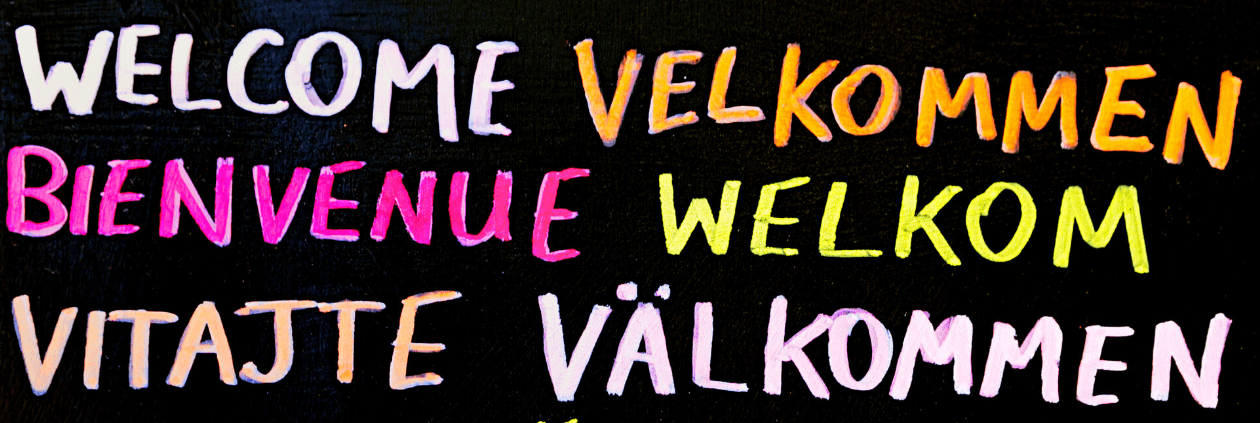

Bilingualism Development in Children
Providing language learning of 2 or more types for young children present many challenges to families and teachers. As our society becomes more culturally diverse, it becomes more commonplace to see children in a classroom with bilingual development occurring.
Generally, the development of two different languages occurring simultaneously occurs in 3 stages. During the first stage, the child has a single lexical system, which holds vocabulary items from both languages, or two separate lexical systems with little mixing or code switching. It is normal for some children to demonstrate some confusion between two developing languages and insert single items from one language into the other (McClure, 1977). It is preferable for infants to be exposed to 2 languages in a “one person, one-language” situation in which one parent speaks tone language while the other speaks another rather than both parents speaking one language in different situations. The child starts to separate words belonging to each language and recognizes to which person each language should be spoken. Learn the sounds specific to each language or phonological differentiation between two languages is also occurring between 2 and 2 1/2 years. In the second stage, the child applies the same syntactic or grammatical rules to two different lexicons. This is a slow and difficult process of generalization during the third and final stage, the child correctly produces lexical (vocabulary) and syntactic (grammatical) structures form each language. The child is completely bilingual by age 7 with two separate processing systems.
The National center for Research on Cultural Diversity and Second Language Learning publish a Digest geared towards fostering second language development I young children. They suggest 8 principles to assist educators working with linguistically diverse students, which were developed from theory and research on second language acquisition and culturally sensitive instruction. They facilitate understanding that bilingualism is a process that occurs in stages.
Principle #1: Bilingualism is an asset and should be fostered.
Principle #2: There is an ebb and flow to children’s bilingualism; it is rare for both languages to be perfectly balanced.
Principle #3: There are different cultural patterns in language use.
Principle #4: For some bilingual children, code switching is a normal language phenomenon.
Principle #5: Children come to learn second languages in any different ways.
Simultaneous acquisition – usually a child under age 3 who is exposed to 2 languages
Type 1 – simultaneous bilingualism – early exposure to both languages and given ample opportunities to use both
Type 2 – receptive bilingualism – children who have high exposure to a second language but have little opportunities to use or practice it
Successive acquisition – exposure to 2 languages after age 3
Type 3 – rapid successive bilingualism – children who have had little exposure o a second language before entering school have ample opportunities to use it once they enter
Type 4 – slow successive bilingualism – children who have had little exposure toa second language and have few opportunities and/or low motivation to use it.
Principle #6: Language is used to communicate meaning. Meaningful activities that require using a second language will facilitate internalization of a second language more readily.
Principle #7: Language flourishes best in a language-rich environment.
Principle #8: Children should be encouraged to experiment with language.
While minimal delays in language development can be observed in bilingual development, a child ho is suspected to be at-risk for speech and language disorders should be referred to a speech language pathologist for diagnosis and potential treatment. General guidelines for language development are as follow: first words are produced at 1 year of age, 50 words at 18 months, and 200 words at 2 years with many combined productions (phrases or short sentences). There is normally an explosion of language development between the ages of 2 and 3. Although a child may have a known communication disorder, bilingual development is still beneficial and should not be abruptly limited to one language unless suggested by a therapist. However, “one-person, one-language” situations may be emphasized to reduce code switching and confusion.
For further information contact:
Bilingual Family Newsletter published quarterly. A free sample copy is available by writing to: Multilingual Matters, Frankfurt Lodge Clevedon, Hall Victoria Road, Avon, BS21 7SJ.
The Hanen Centre, Suite 403-1075 Bay Street, Toronto, ON M5S 2B1, Canada info@hanen.org
ERIC Clearinghouse on Languages and Linguistics, 4646 40th Street, NW, Washington, D.C. 20016-1859
